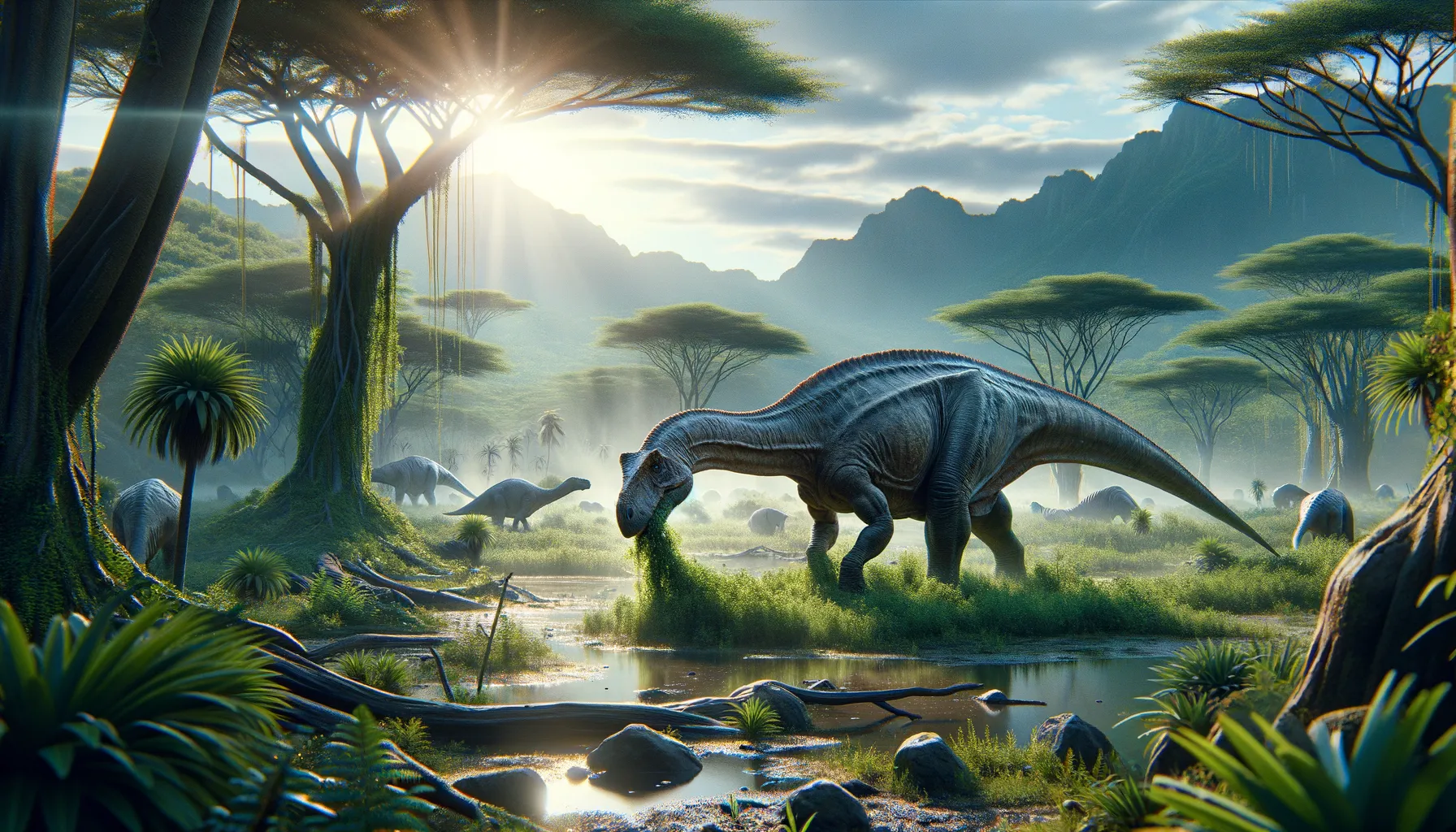
Malawisaurus
Graceful giant of ancient Africa.
Period
Cretaceous
Length
About 16 meters long.
Height
Around 3 meters at the shoulder.
Weight
Approximately 10 metric tons.
Malawisaurus was a long-necked, plant-eating dinosaur that inhabited Africa during the Early Cretaceous period. It was a mid-sized sauropod known for its robust body and relatively short, stout limbs. This dinosaur played a crucial role in its ecosystem, helping to maintain the balance by feeding on the vast vegetation available at that time. Its fossils provide valuable insights into the diversity of sauropods in ancient Africa.
Diet
Malawisaurus was a herbivore, primarily feeding on plants. It used its long neck to reach vegetation in both high and low areas, consuming a large amount of foliage daily to sustain its massive body.
Hunting
As a herbivore, Malawisaurus didn't hunt but rather spent most of its time grazing. Its primary focus was on finding and consuming sufficient plant material in its environment to meet its dietary needs.
Environmental challenges
Malawisaurus faced challenges such as fluctuations in climate that could affect the availability of vegetation. Predatory threats from carnivorous dinosaurs were also a concern, especially for the young and weaker individuals. The shifting landscape, with changing forests and water sources, meant that these dinosaurs had to be adaptable to survive.
Speed
It moved slowly, like other large sauropods.
Lifespan
Around 60 to 80 years in the wild.
First discovery
Malawisaurus was first discovered in Malawi, Africa, in the early 1990s.
Fun Facts
- Malawisaurus was a type of dinosaur known as a sauropod, which means it had a long neck and tail, and a small head, similar to the famous Brachiosaurus.
- This dinosaur lived approximately 115 million years ago during the early part of the Cretaceous Period.
- Fossils of Malawisaurus were first discovered in Malawi, Africa, which is how it got its name.
- Malawisaurus is known for having fossilized skin impressions, providing scientists clues about what its skin might have looked like.
- Compared to some of the larger sauropods, Malawisaurus was relatively small, measuring around 30 feet in length.
- It likely traveled in herds for protection against predators.
- Malawisaurus was an herbivore, meaning it only ate plants, and its long neck helped it reach high vegetation.
Growth and Development
Malawisaurus likely hatched from eggs, starting life relatively small before undergoing rapid growth. Like other sauropods, it grew continuously throughout its life, reaching full size several years after hatching. This growth was supported by its high-fiber, plant-based diet, which provided the necessary nutrients.
Habitat
The habitat of Malawisaurus consisted of lush floodplains and forests, offering abundant plant material for feeding. This environment also provided protective cover from predators. Water sources, like rivers and lakes, were crucial to its survival, ensuring they had access to drinking water and supporting plant life.
Interaction with other species
Malawisaurus likely coexisted with other herbivorous dinosaurs, sharing the vegetation resources. It also shared its environment with various predators, requiring it to be vigilant, especially to protect its young. The competition for food among herbivores could have driven its migratory behavior, allowing different species to coexist by occupying slightly different niches.
Natural lifespan
Malawisaurus could live up to 60 or 80 years in the wild.
Reproduction
Malawisaurus reproduced by laying eggs in nests, likely in sandy or soft soil to offer some protection and warmth. These nests may have been communal, with several females potentially laying eggs in the same area to provide additional safety through numbers.
Social behaviour
Malawisaurus might have lived in herds, offering protection from predators. Herd living would help ensure more adult dinosaurs were present to deter attacks. Social structures could have been formed around nurturing and protecting the young.
Fossil locations
Fossils of Malawisaurus have primarily been found in Malawi, illustrating its habitat range and confirming its presence in Africa during the Early Cretaceous period. These discoveries help paleontologists understand the distribution and diversity of sauropods on the continent.
